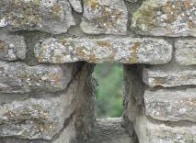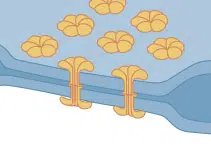 A cleft is a fissure or cut that occurs in a solid surface that fails to separate or divide. The term is also used to name a narrow and shallow opening .
A cleft is a fissure or cut that occurs in a solid surface that fails to separate or divide. The term is also used to name a narrow and shallow opening .
For example: "It is important to control the cracks in the tires since wear increases the risk of an accident" , "I was sitting for so long that I left a crack in the sofa" , "When the storm broke out, the animal took refuge in a cleft of the mountain.”
In the field of anatomy , a fold, a depression or a groove is called a cleft or groove . The nasolabial or subnasal fold , to name one example, is located between the nose and the upper lip of the mouth. Formed by two small ridges in the skin, this indentation has a width and length that vary from person to person.
It is believed that the nasolabial fold is a trace of the union that, in the ancestors of human beings , existed between the nose and the mouth. In animals whose subsistence depends largely on smell, this slit allows the snout to be hydrated by transferring moisture from the mouth. With human evolution, the sense of smell lost its preponderance, which is why the nasolabial fold does not fulfill that function in our species.
Slit drums , on the other hand, are percussion musical instruments . It is an idiophone (its body is the resonating material, that is why it has its own sound) that is made of wood and has several indentations so that, when hit, it sounds.
The channel that exists between each pair of cells , through which molecules can move, is known as the intercellular cleft . More precisely, we find it in epithelial cells, that is, those that cover the different surfaces of our body and are found in the skin, organs and blood vessels. We can also see the intercellular cleft in the endothelium of lymphatic and blood vessels (the endothelium is a tissue that has a single cell layer).
 Communication between two cells depends largely on the intercellular cleft, and inside there are tight junctions, band desmosome proteins and gap junctions, thanks to which the propagation and regulation of signals is possible, among other functions. . Although the cleft is nothing more than a channel, everything that flows through it, such as ions and small molecules, is essential for the cells that are around it.
Communication between two cells depends largely on the intercellular cleft, and inside there are tight junctions, band desmosome proteins and gap junctions, thanks to which the propagation and regulation of signals is possible, among other functions. . Although the cleft is nothing more than a channel, everything that flows through it, such as ions and small molecules, is essential for the cells that are around it.
In addition to the aforementioned communication between cells, the intercellular cleft plays an auxiliary function in the formation of the blood-nerve barrier that we find around the nerves . It is a necessary component to transport small solutes and fluids within the endothelium.
Each intercellular cleft has different dimensions, depending on the part of the body to which it belongs, but certain approximate values have been established that serve to define the length, width and other of its properties. For example, in capillaries , the average length is around 20 meters per square centimeter. Its measured depth between the luminal and basal opening averages 0.7 microns (a micron is one millionth of a meter).
Regarding the width of the intercellular gap, throughout much of its extension it is around 20 nanometers (one nanometer is equivalent to one billionth of a meter). In capillaries, it has been determined that the slit occupies only 0.4 percent of the wall surface , and there it diffuses hydrophilic fluids and small solutes freely.
